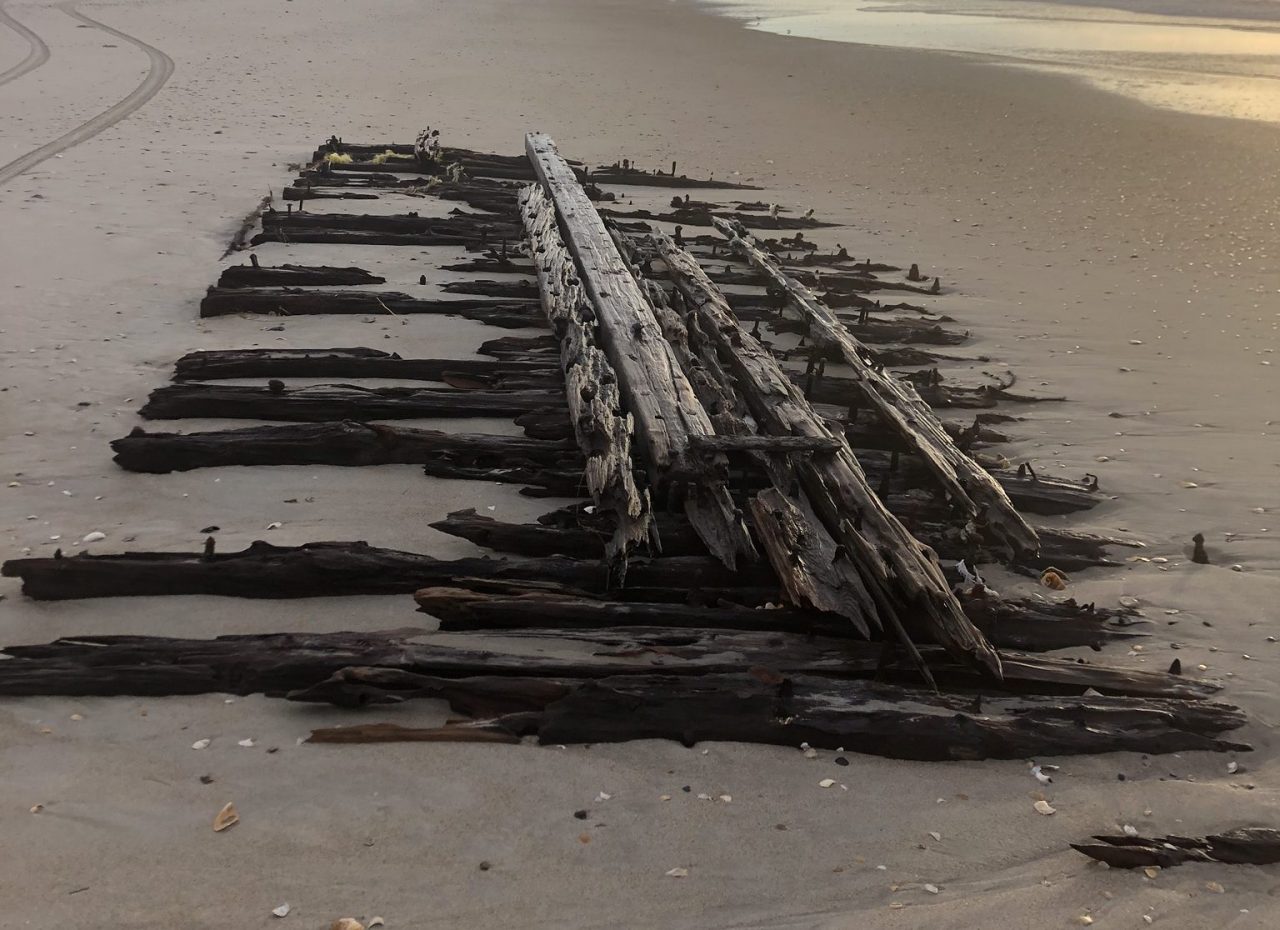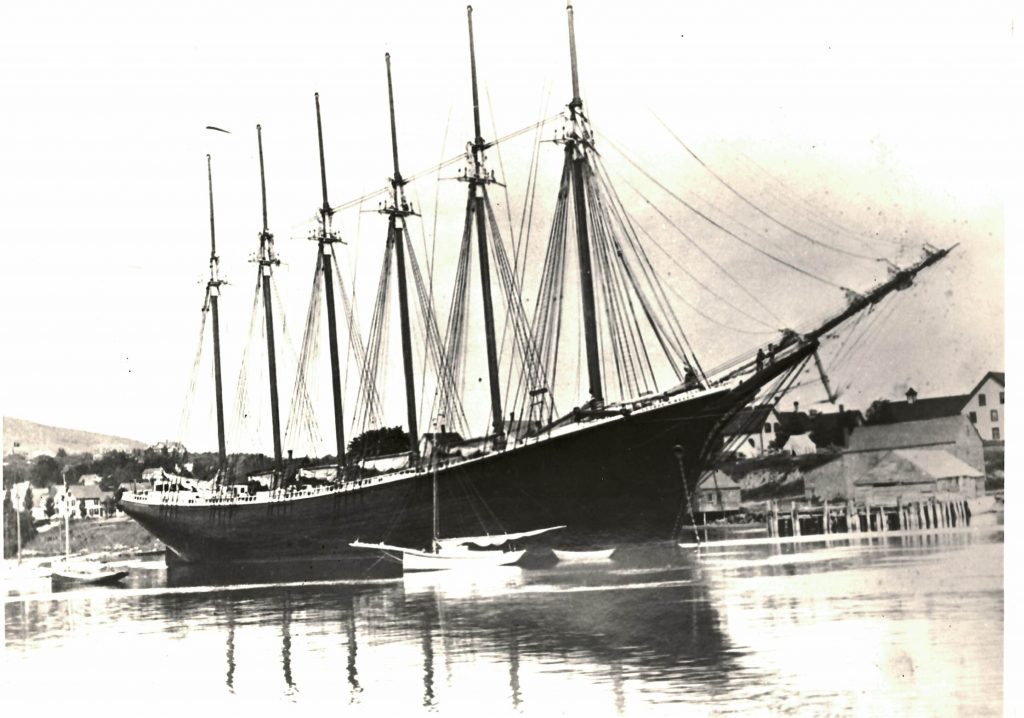
In a year with very few tropical systems, Hurricane Four of 1913 received barely a notice by the Raleigh office of the Weather Bureau of the United States.
“While located offshore North Carolina early on September 3, the cyclone peaked with maximum sustained winds of 85 mph … and a minimum barometric pressure of 976 mbar … Hours later, it made landfall near Cape Lookout at the same intensity,” Lee A. Denson, section director in Raleigh for the bureau, wrote in his annual report. “Shortly after moving inland, the system weakened to a tropical storm. By September 4, it deteriorated to a tropical depression before dissipating over northeastern Georgia.”
Supporter Spotlight
Denson also reported winds as high as 74 mph at Hatteras, noting that, “The worst of the property damage occurred in the vicinity of New Bern and Washington … Northeast to southeast gales caused waterways to rise 10 ft above previous high-water marks. Large railroad bridges in both New Bern and Washington were washed away, as were many other small bridges. Many low-lying streets were inundated …”
What Denson did not include in his report, however, was the storm’s impact on the immediate coast, where telephone and telegraph lines were down, and rumors circulated nationwide that everyone on Ocracoke Island had perished. “Tidal Wave Hits Island Killing 500” was the headline in the Wilmington, Delaware, Evening Journal.
Also not included in the Weather Bureau report was that the British tramp steamer Glenaen had run hard aground at the southern point of Ocracoke Island, or the four ships the Life-Saving Service had reported lost between Rodanthe and Cape Lookout.
The schooner Richard F.G. Hartley, bound for Charleston, South Carolina, was first to founder Sept. 2 after being “overtaken by bad weather … 20 miles off Bodie Island,” the Life-Saving Service recorded in its annual report.
With the ship damaged and clearly sinking the report noted, “the master chose what was doubtless the lesser of two evils and headed for the shore, hoping thereby to save the lives of his crew and himself, if not his ship.”
Supporter Spotlight
That’s when the schooner was discovered by the surfman on watch at the Chicamacomico Station at “about 2 o’clock on the afternoon.”
Crews from Gull Shore to the north and New Inlet to the south were telephoned and came to aid in the rescue. The wind was blowing due east at 70 mph “rendering the outlook of putting a line over the schooner exceedingly doubtful.”
As waves washed over the ship, the crew was thrown into the sea. Clinging to wreckage, the men were brought to land by the Life-Saving Service men who braved the surf to rescue the survivors. Of the seven-man crew, two were lost to the sea.
Still, the rescue was considered a success. “The survivors from the master down, were heartily of the opinion that the corps did all that was humanly possible in their behalf,” according to the report.
Although the Hartley was the only known fatal shipwreck during the hurricane, it was not the sinking that caught the nation’s attention in its aftermath. Rather it was another wreck and the rescue of its crew, followed by accusations of piracy.

A dramatic rescue
When launched in 1900, the George W. Wells was the first of its kind — a six-masted schooner and one of the largest wooden sailing ships ever built. Thirteen years later, as Hurricane Four roared ashore at Ocracoke on Sept. 3, 1913, the ship was dying. Sails were ripped from the masts and the ship was hard aground on a shoal 400 or 500 yards from the beach.
The Hatteras Inlet U.S. Life-Saving Service Station on the northern end of Ocracoke Island first reported the foundering ship. Knowing that the Wells was stranded on a reef well offshore, Station Keeper David Barnett requested aid from Durants Station on Hatteras Island.
By 3 p.m., the crew from Hatteras Inlet was at the scene. Twenty minutes later, the Ocracoke Life-Saving Service crew arrived, “having sighted the vessel offshore and followed her up the beach as she scudded before the gale.”
There is no record of why aid was not requested from the Ocracoke Life-Saving Station, but it is possible that Barnett knew that station was attempting the rescue of the British tramp steamer Glenaen that was beached at Ocracoke.
Although not mentioned in the Life-Saving Service’s annual report, it’s possible that the Ocracoke Station crew was at the site of the grounded ship. When the tide went out it was apparent the steamer was undamaged and so hard aground that there was no danger of being swept from the sandbar. With the wind blowing hard from the southeast, the George W. Wells, which had been bound for Florida, would have been pushed northwest, parallel to the Ocracoke beach and visible to the Ocracoke Life-Saving Service crew.
Related: Shipwrecks Link Researchers to Bygone Era
With the crews of three stations on hand, the attempt to rescue the 14 crewmen and six passengers began. It would be a difficult mission.
“The schooner lay four or five hundred yards off the beach, and, as the weather was thick with the wind blowing toward the land, she was a very poor mark for the Lyle gun” that was used to project lines over stranded ships.
“Several attempts, all of them ineffectual, were made to put a line over her,” the Life-Saving Service noted.
Capt. Joseph York of the Wells responded by tying a rope to whatever would float, an effort to use waves and currents to carry it toward shore. This worked, and the Life-Saving Service crew waded into the angry surf to retrieve the floating gear.
As lines were attached to the breeches buoy that would bring the crew and passengers to safety, one of the lines broke and was quickly replaced. Then on the beach, “the tackle on shore parted. This mishap also being repaired, the breaches buoy at last sped to the schooner and in a short while every soul on board — 20 persons all told — was safe on the beach.”
Lifesavers accused
Although the Life-Saving Service described the efforts to rescue the Wells’ crew as “exceptionally meritorious,” York, the ship’s captain, was not satisfied.
Two weeks after his rescue, he made his displeasure known.
“Saved by Lifesavers, He Now Calls Them Pirates … Capt. of Wells threatens to make charges,” read the front-page headline of Sept. 17, 1913, in the Washington Daily News.
York was angered over the salvage price for the ship.
“They are a bunch of pirates,” the Beaufort County paper quoted him as saying. “They have formed a combination, a trust, among themselves to buy all wrecked vessels. They agree not to bid against each other and in that way they prevent competitive bidding. When the Wells was sold at auction I was forced to let her go for $800. I should have got $1,500.”
He went on to say that there was also wholesale looting of the ship as it lay on the beach.
“My mate, Gus Green, and I had to drive the natives away at the point of pistols to prevent them from stealing the whole ship,” the Daily News quoted York as saying.
The ship burned two days after it beached. York claimed it was set fire over “a falling out over the prize.”
York’s accusation of Life-Saving Service personnel colluding to fix the salvage price of his ship also appeared Sept. 15, 1913, in a Washington Post interview, which would be cited in a letter to the House of Representatives from Assistant Secretary of the Treasury Bryon Newton dated Nov. 29, 1913, and read into the congressional record.
The Life-Saving Service was part of the Treasury Department and, according to Newton, York was asked to uphold his claim.
“A telegram was … sent to Capt. York by this department, demanding that he substantiate his charge or withdraw it, but although diligent effort was made to reach Capt. York the department was unable to get any reply from him,” according to the letter.
Although the captain could not be contacted, the Treasury Department deemed the charge serious enough that it warranted investigation.
“Each keeper positively denied that there was any truth in Capt. York’s complaint,” the investigation found, and “the wrecked vessel was bought by Mr. Adolphus Burrus, a person in no way connected with the Life-Saving Service.”
The investigation exonerated the service of any wrongdoing, writing, “It is considered very unfortunate, as well as an injustice to the Life-Saving Service, that the false and misleading statements contained in the clipping referred to should ever have been published.”
Worth noting is that Adolphus Burrus’ older brother was Hatteras Inlet Surfman Roscoe Burrus. The brothers were close in age, both born in 1882.







